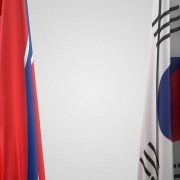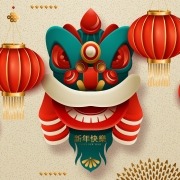What are the differences between Chinese Simplified and Chinese Traditional?
This article is basically a Comparison between Simplified Chinese and the Traditional Chinese in the context of English to Chinese translation, and it’s only intended to provide some very basic information to people who are looking for Chinese translators but do not quite know much about the differences of the two variations.
Simplified Chinese (or Chinese Simplified)
The WRITTEN text (of Chinese) that is used in mainland China and among people of Chinese origin in Singapore nowadays. This written form mainly evolved and was adopted after the end of civil war and the establishment of today’s P.R.China in 1949, so you may also call it as a relatively “modern form” of Chinese text. The reason and purpose for the Chinese government to develop this simplified writing system is believed to be “simplifying the writing method, easing the effort in writing, and encouraging more people to become literate.”
Traditional Chinese (or Chinese Traditional)
The WRITTEN text (of Chinese) that is used in Hong Kong and Taiwan nowadays. As its name tells, this is a traditional version that had been written by Chinese people for thousands of years. Although people in Mainland China and Singapore began to adopt the Simplified text after 1949, people in HK and Taiwan continued to use the “old” traditional text due to the political separation.
Mandarin and Cantonese
They are two SPOKEN styles/dialects of Chinese language. As an official spoken “dialect”, Mandarin is widely used in Mainland China, Taiwan and Singapore. In translation industry, Cantonese is specifically targeted to HK audience only.
The Difference
Theoretically and at the beginning, they had NO DIFFERENCE except for the writing method of the Chinese characters!
Simplified Chinese (SC) characters have fewer strokes and are easier to write than Traditional Chinese (TC), that is why it’s called “Simplified” and is the ONLY difference when the SC writing system was first developed. However, the rapidly changing world have brought out more and more new words (such as the “Internet”, “Software”) into our daily life, and naturally, these new words may have different local versions in Mainland China, HK and Taiwan respectively. To use proper terms is the first concern when a specific version (either SC or TC) is specified as the target translation language; Secondly, the political isolation between P.R.China and HK, Taiwan for several decades also created some slight variation in the style and wording of language, which are naturally reflected in their written forms (to understand the second situation, you may associate it with the difference between the written styles of US English and British English).
For Simplified Chinese translators who wish to translate into Chinese Traditional, or for Traditional Chinese translators who wish to translate into Chinese Simplified, they need to get familiar with style and wording of the target language, and make sure to use proper version for those specific terms. Doubt whether they can perform perfectly in this aspect? You may compare by asking whether a well-educated American guy can write good British English.
To conclude
The above information may sound a little bit complicated to non-Chinese speaking people. To make things simple, let’s put it this way:
- For mainland readers, translate into Simplified Chinese text, mandarin style
- For HK readers, translate into Traditional Chinese text, Cantonese style
- For Taiwanese readers, translate into Traditional Chinese text, mandarin style
- For Singapore readers, same as for mainland readers.






















Leave a Reply
Want to join the discussion?Feel free to contribute!